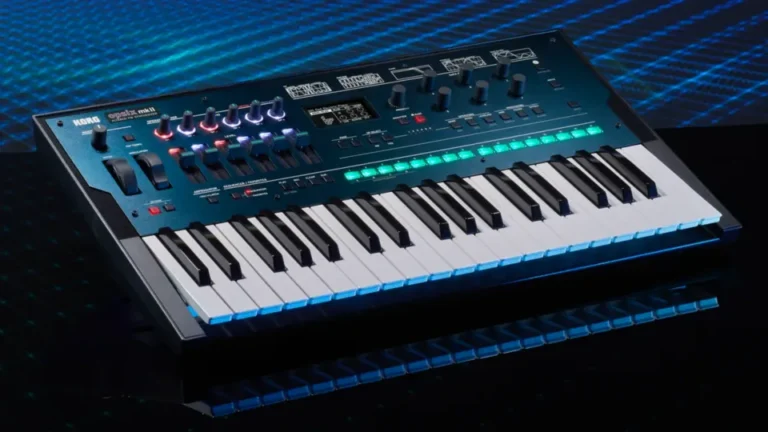It will cost $700 when it launches in March.
A number of announcements have already been made by Korg in advance of NAMM 2024, and now the firm is returning with an updated version of their well-known Opsix FM synthesizer system. An approachable entryway into the world of FM synthesis is still provided by the Opsix mk II, and it is also based on the “Altered FM” digital sound engine that was used in the original. Having said that, this is not even close to being a minor update.
In the news, there has been a significant increase in polyphony. There were 32 voices in the first version, which is still a sufficient number; but, the second version has 64 voices that are pure polyphonal goodness. Either you will be able to create sounds that are extremely sophisticated and multi-layered, or you will be able to create a cacophony of sounds as you attempt to press every key at the same time.
In a sense, the six-operator FM engine has remained relatively untouched; nevertheless, it is possible to equip it with a wide variety of new “sound components” that have the ability to significantly alter the signal. You have the ability to route it through upwards of thirty effects, some of which include a three-band equalizer, chorus, phaser, flanger, distortion, compressor, delay, reverb, grain shifter, and many more. When doing semi-modular synthesis, the signal channels can also be redirected internally when necessary.
Naturally, there are a variety of filters that are designed in the analog style. These filters include filters that are modeled after the Korg MS-20 and the Korg PolySix, as well as resonant low-pass, high-pass, band-pass, and band-reject filters that have two or four poles. Because any parameter can be modified with the help of a dedicated matrix that is outfitted with three envelope generators and three LFOs, you won’t have any trouble coming up with sounds that are completely unique here.
The very nature of this technique makes it possible to digitally recreate a variety of synthesis types, including subtractive, semi-modular, waveshaping, additive, and analog modeling synthesis, in addition to the traditional FM synthesis. By referring to this as a “six-operator” FM synthesizer, Korg is referring to this particular model.
The mk II is entirely compatible with the sounds and samples from the original Opsix, and it connects with the company’s proprietary software package, which provides full access to a wide variety of sound libraries. This is a relief for those who were concerned that this update would fundamentally alter the atmosphere of the original Opsix. Therefore, if you prefer to use the original sounds, you can simply load them into your computer.
In addition to being velocity-sensitive and release velocity-sensitive, the 37-note keyboard also features a programmed step sequencer that can accommodate up to sixteen steps per pattern and six notes per step separately. In addition, there is an arpeggiator built right in, which has seven different patterns. A bright screen that faces the front is one of the features that the mk II possesses, along with a large number of faders and knobs that are illuminated for the purpose of making adjustments. The following are the connections that are available: a jack for a damper pedal, a headphone out, a stereo line out, MIDI in/out, a USB-B port, and a headphone out. When it is released in March, the Korg Opsix mk II will be available for purchase for a price of $700. This represents a price reduction of $200 compared to the initial release of the instrument.
This year at NAMM, Korg has a significant presence, since the firm has also hinted at the possibility of releasing a desktop module for the Opsix, in addition to desktop modules for the Modwave and Wavestate synthesizers. In addition, there is a miniature synthesizer known as the MicroKORG 2, which is guaranteed to be extremely popular and sell like hotcakes.

